Rediscovering Straw as a Building Material
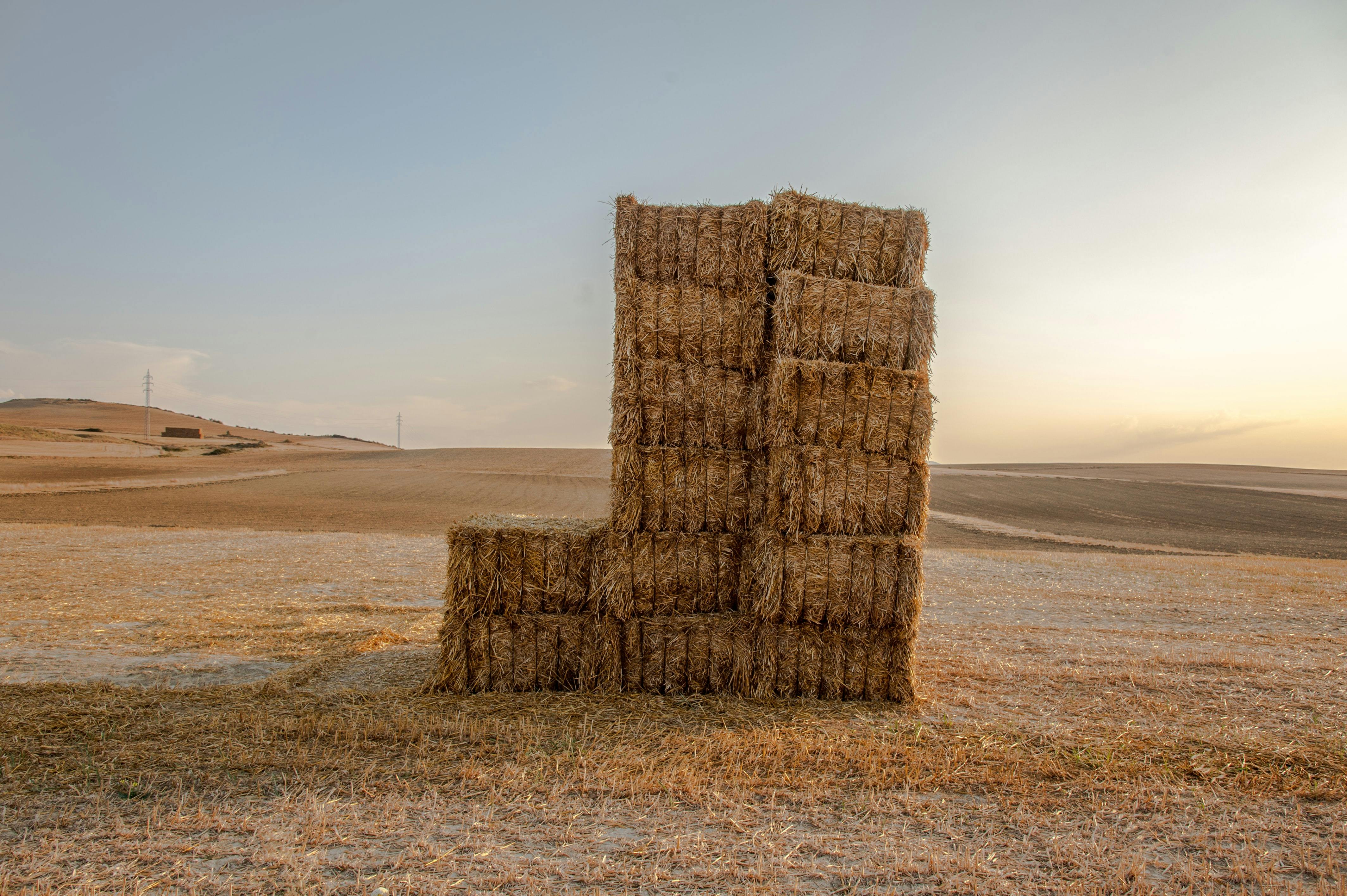
Headlines like "Straw is the stone of the future", "As old as mankind and suddenly modern again" or "From the field into the wall" are appearing more and more in the media at the moment and not without reason: Straw is great and should be used much more. In today's article we explain why.
Straw is one of the oldest and most archetypical building materials in the history of civilaization. As soon as humans began building primitive shelters for protection, straw was used as a versatile resource that was easy to procure. It was used in combination with mud to create a mouldable material for walls but also without any bonding material, for example for roof structures. From the middle ages onwards, straw was used to fill in the wooden scaffolding structures that were used for the majority of buildings at that time. Every building that wasn’t built of stone had straw in it in one way or the other. Across all cultures it was adopted as a versatile, low-cost and easy to manufacture building material.
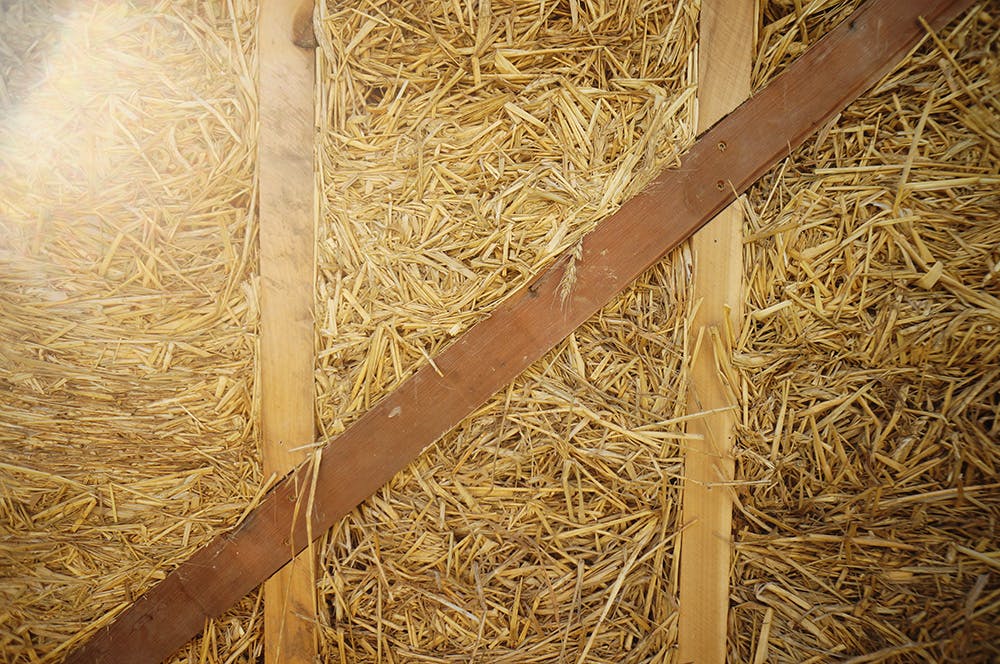
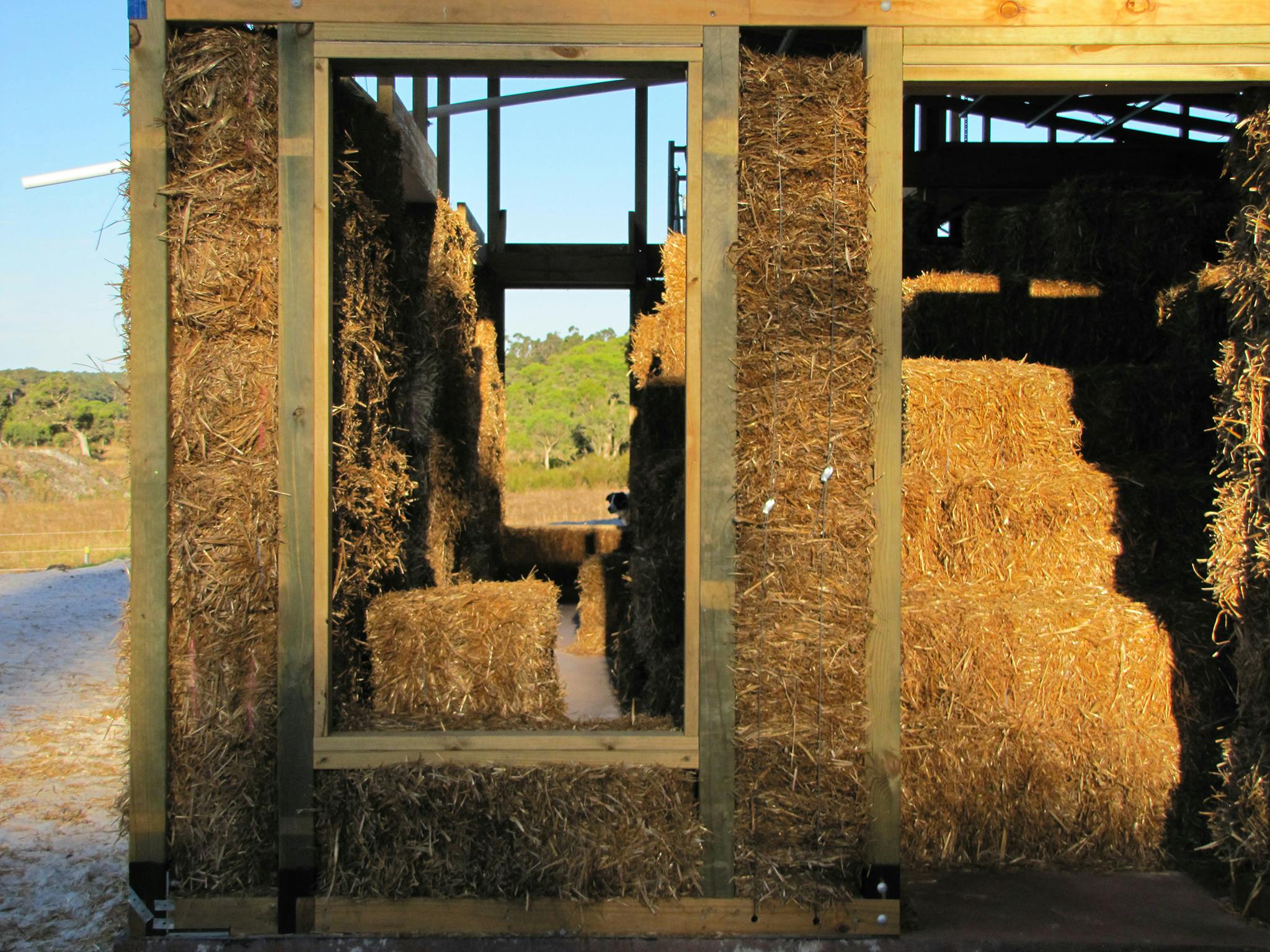
It is no wonder that straw has been so successful as a building material over time. It has some obvious advantages and qualities compared to other materials that explain the success it has. It is a natural easy to find raw material with excellent insulation qualities. It is easy to process and manufacture into components like weaved structures or used as an additive to plaster. At the same time it is renewable, easy to access, healthy and lightweight and therefore has been very popular through different epochs of building.
Straw has without a doubt been associated in the past with a more raw, low cost and economic approach to building and therefore might be regarded as having a certain primitiveness about it. This perceived lack of sophistication as a building material originates from a rather one-dimensional, conservative point of view. In fact, straw has a huge potential as an innovative and sustainable building material in many different forms. For example straw can be compressed and used in panels for walls and facades. In this case straw is manufactured into a component which can then be used in a flexible way for different architectural purposes.
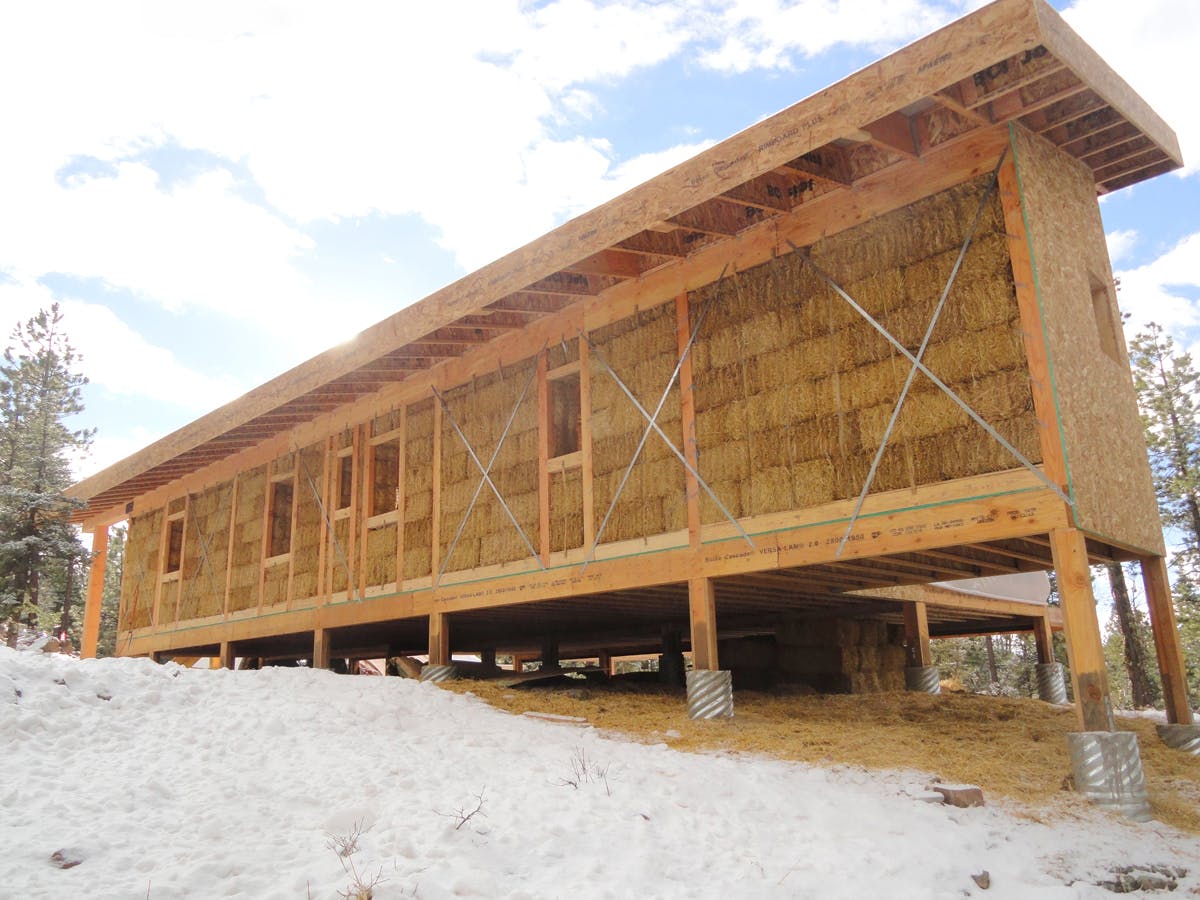
Also, the concern that straw is more susceptible to pests or fire hazard than industrial building materials can be taken. The straw is so tightly compressed that pests have no chance. The pressing also cuts off the oxygen supply which otherwise leads to easy flammability. With additional lime or clay plaster, straw construction achieves a fire resistance class that withstands as long as a conventional concrete building. We should detach in our minds straw from the notion of primitive workmanship. Straw is a generally approved building material with quality assurance. Prejudices that stone houses are more robust or durable simply do not apply. However, there are only about 1000 straw bale houses in Germany and just about 50 houses are added each year. Although the prejudices are not true, the building industry is simply used to industrial synthetic construction methods. But is that an argument? Since we need the transformation of the construction sector, this argument at least seems to be crumbling, and straw can make a significant contribution to the transformation.

As a building material straw works very well within the requirements of the circular economy as it comes from a quickly renewable natural source. It is growing very rapidly, while renewable raw materials continue to offer the advantage of independence from imports. Also, it does not need a lot of processing to be fabricated into panels and other architectural components. It is a relatively simple process, that doesn’t have a large carbon footprint. Using only pressure and heat, straw is bonded together without the need of additional chemical bonding agents to form a panel. The only additives a bale of straw contains are the strings used to bind it. Compared to conventional building materials such as steel or concrete, which are produced with the highest use of energy and resources, straw is extremely environmentally friendly. Last but not least, straw bale houses primarily require stalks, which are largely a waste product of threshing. Some of them are still used as bedding in stables or for fertilizing fields, but otherwise they are of no use in agriculture. This leaves about four million tons of straw each year as a by-product, which can be used in the construction industry and can be purchased very cheaply.
Straw is a very efficient insulation material, because it contains a lot of air within its volume. As a natural material it contributes to creating a healthy room climate with an improved quality for the people using the space. While straw keeps the walls warm, clay absorbs excess humidity and gradually releases it. As a result, the humidity in the room is always balanced. In addition, clay neutralizes odors floating in the air. Unlike many other insulating materials, it can be composted after its use, giving back nutrients to the natural resource cycle. In this regard straw is among the environmentally healthiest building materials and has a huge potential to be used in circular architecture in the future.
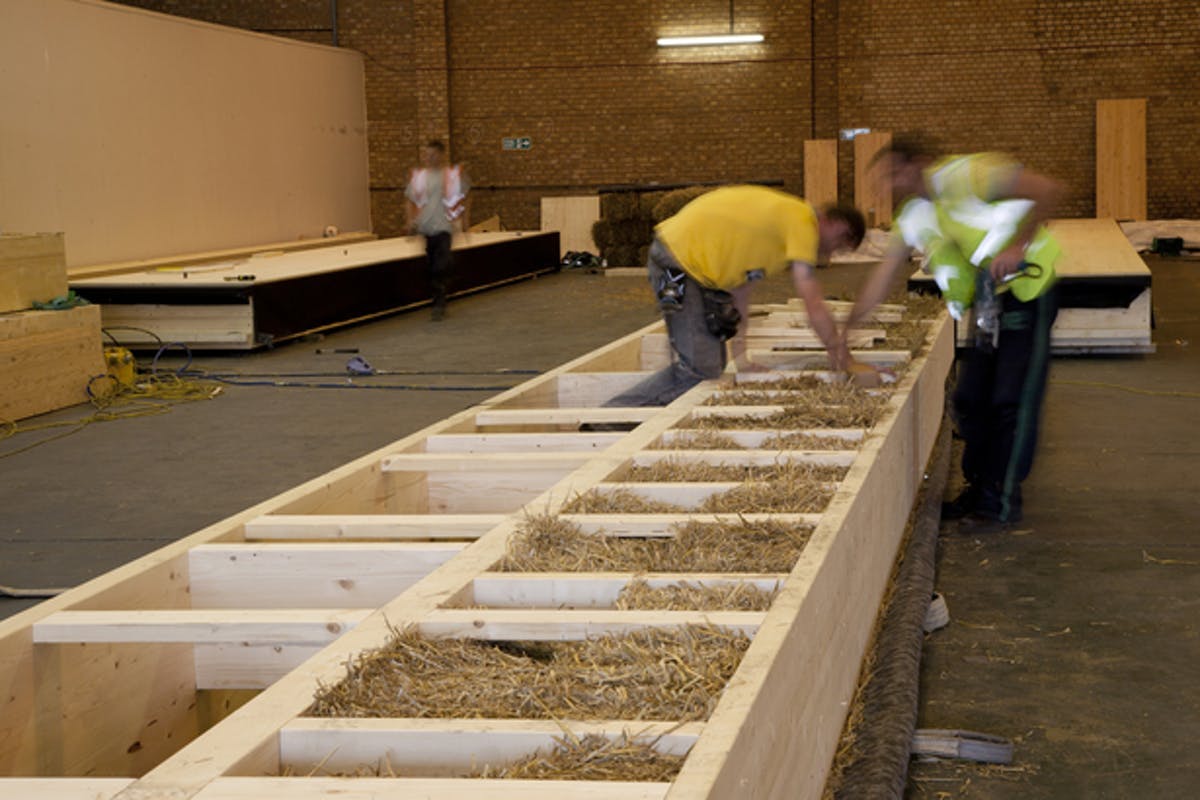

The advantages of straw building are overwhelming: straw has very good sound and heat insulation, it is faster growing than wood and compostable, straw building is low in resources, straw is cheap, it can be produced locally, quality controls are in place, straw houses offer better earthquake resistance and they are pollutant-free. But what about disadvantages? Surely there must be, or is straw just not used because of social rejection?
Yes, there are disadvantages. Straw construction is currently the most complex new building method. It requires exact planning and precise execution. Since straw must not become sodden, dry storage of the building material and dry construction must be ensured. Furthermore, a foundation with a moisture barrier and a roof with a wide overhang are required. The weather side should also be protected with boarding. Getting straw into the walls requires far more manual labor than applying a composite thermal insulation system. This extra effort eats up the cost benefits, because the degree of industrialization in straw construction is not yet advanced. Furthermore, architecture, especially in times of low industrialization or standardization of straw construction is in demand for sensible concepts to use straw efficiently.
In my opinion, the disadvantages show one thing above all: the raw material straw itself has no disadvantages, and that in itself is an impressive fact. What does have disadvantages is merely the processing. And that suggests that straw construction can benefit greatly from innovations and industrialization processes to become the number one building material of the future.
Back